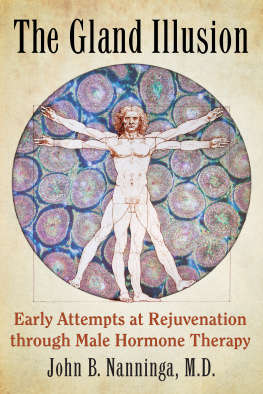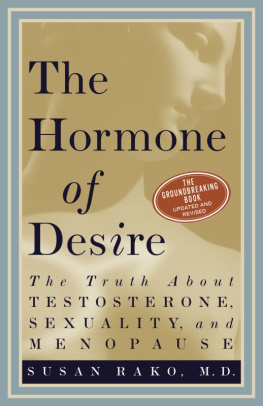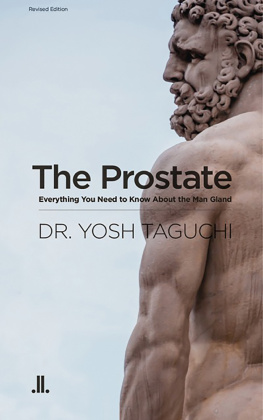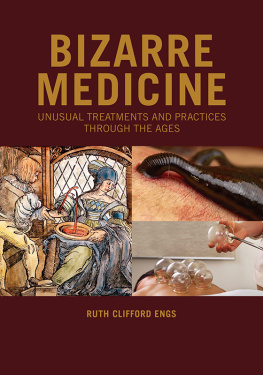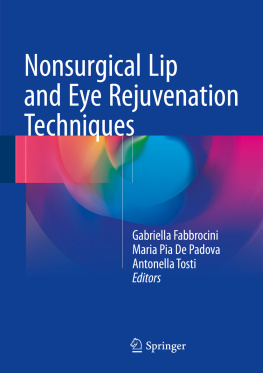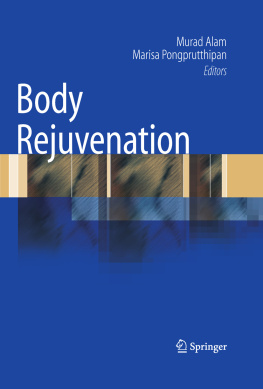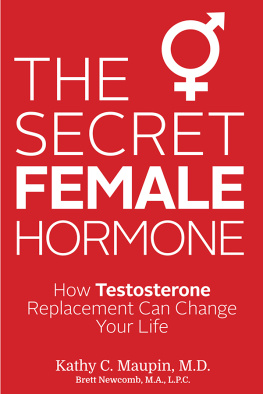
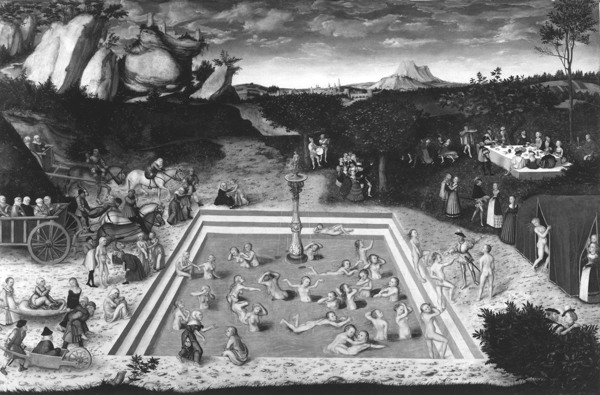
The Fountain of Youth,by Lucas Cranach, painted in 1546. The painting shows older, decrepit women being brought to the edge of the pool surrounding the fountain. There they disrobe and enter the pool, where they are transformed into much younger ladies. They exit the pool and enter a tent, where they dress in the latest fashions. They then proceed to a table set with food and drink, then to a dance. The figure atop the fountain is that of Eros, god of love, whom Cranach believed was responsible for regaining youth. (Image courtesy of Art Renewal Center, Port Reading, New Jersey; the original painting is in the Staatliche Museen, Berlin-Dahlem.)
The Gland Illusion
Early Attempts at Rejuvenation through Male Hormone Therapy
John B. Nanninga, M.D.

McFarland & Company, Inc., Publishers
Jefferson, North Carolina
LIBRARY OF CONGRESS CATALOGUING DATA ARE AVAILABLE
BRITISH LIBRARY CATALOGUING DATA ARE AVAILABLE
e-ISBN: 978-1-4766-2659-8
2017 John B. Nanninga. All rights reserved
No part of this book may be reproduced or transmitted in any form or by any means, electronic or mechanical, including photocopying or recording, or by any information storage and retrieval system, without permission in writing from the publisher.
Front cover: (foreground) Leonardo da Vincis 1492 drawing of the Vitruvian Man; (background) microscopic section of testis tissue sample (iStock)
McFarland & Company, Inc., Publishers
Box 611, Jefferson, North Carolina 28640
www.mcfarlandpub.com
Acknowledgments
I first conceived of writing this book after reading an article in 2002 in The Pharos, by Virginia Pruitt, a professor of English at Washburn University in Topeka, Kansas. The subject of the article was Dr. John R. Brinkley, the goat gland surgeon, who practiced in Milford, Kansas. Having grown up in Kansas, I had heard stories about Dr. Brinkley and the goat gland craze. I sought to learn more about Brinkley and what proved to be a gland era. But it took a few years of gathering information before I had time to sit down and start writing.
Few of the articles, books, and pamphlets were readily available on the medical library shelves. Some were online, but some of the journals were no longer in print and hadnt yet appeared on a Web site. Hence, I made multiple trips to the stacks of the Galter Medical Library at Northwestern University. Several of the librarians there, particularly Ron Sims, special collections librarian, were helpful in digging out information from over a century ago. Also of help were Rumune Kubilius, special projects librarian, and Linda ODwyer. Sue Sacharski, archivist at Northwestern Memorial Hospital, aided me in finding information on Dr. Victor Lespinasse.
Different sites in the U.S. and England provided valuable material in composing a meaningful and relatively complete account of my subject. On the West Coast, my first visit was to the Lane Medical Library at the Stanford University Medical Center, where Drew Bourn provided the papers of Dr. Leo Stanley, a Stanford graduate. While reviewing the Stanley papers, I found that Dr. Stanley had left additional papers and memorabilia to the Marin County Free Library, in the Anne T. Kent Room Collection. There Laurie Thompson and Carole Acquaviva provided more material on Dr. Stanley, particularly his tenure as physician at San Quentin Prison. Laurie sent me additional newspaper accounts of Dr. Stanleys obituary. While reviewing various articles by and about Dr. Stanley, I discovered that he had donated additional material to the California Historical Society, in San Francisco. A trip there for a review of Stanleys papers was helped immeasurably by Eileen Keremitsis and Allison Moore. They produced additional articles about Dr. Stanley and the various physicians in the Bay Area with whom Stanley had contact.
The late Dr. James Pick provided a textbook by Serge Voronoff and bibliographies of Drs. Lespinasse and Lydston. He had been a student at Northwestern University Medical School while Dr. Lespinasse was still a faculty member. I have wondered if Dr. Pick intended to write a book similar to mine.
Professor Kevin McKenna, of the Northwestern University Feinberg School of Medicine, provided helpful advice about the subject matter of this book.
The librarians at the Chicago Art Institute were helpful in providing information on Lucas Cranach the Elder.
Genevieve Amaral , graduate student in French and comparative literature at Northwestern University, was helpful in translating correspondence between Alexis Carrel and Serge Voronoff, 191213.
I am sure there are some whose names I have omitted, particularly several librarians at the Kansas Historical Library. There was also a helpful librarian at the Junction City (Kansas) Museum Archives, and the volunteer, who kept the library open past closing time so I could finish reading a file on Dr. Brinkley. The librarians at the Wellcome Library, in London, were helpful in providing several books by Serge Voronoff not readily available in the States.
Finally, my son Eric was a great help in guiding me through the word processing program so this book could be completed.
Preface
Who doesnt want to live longer, live better? Today, with life expectancy of seventy-six years for men and eighty-one years for women, a person nearing retirement age can look forward to at least a decade of life, hopefully filled with enjoyment and a productive existence. But all too often, these years are marred by illnesses such as cancer, heart disease, and neurological diseases including stroke and various dementias. Prevention of the ill effects of aging currently emphasizes diet, including a reduction of foods containing sugar, weight control, exercise, and remaining mentally active.
Separate attacks on the various illnesses associated with aging have shown some success, but a current trend is to attempt to solve the aging process itself. If we were to do so, the above-mentioned diseases would be reduced in frequency, possibly providing two or three additional decades of reasonably good health.
Science is providing early clues to the aging process. The laboratory of Cynthia Kenyon, at the University of California, has been investigating the life of the lowly roundworm. It has been found that certain genes named daf-2 and daf-16 prolong the life of the worm. These studies have been extended to fruit flies and mice. Humans would be the next logical step in studying the activity of these genes and others influenced by them.
The laboratory of Dr. David Sinclair, at the Paul F. Glenn Laboratories for the Biological Mechanisms of Aging at Harvard, has been investigating longevity control pathways, searching for agents that will promote these pathways. His research has focused on a group of genes known as sirtuins that are believed to protect against the process of aging. The agent found in red wine, resveratrol, seems to increase the activity of sirtuins.
A relatively new drug, rapamycin, has been used to prevent rejection in kidney transplants. In testing this drug, first in mice, it was found that mice receiving the drug lived longer than control mice. Rapamycin acts to suppress a protein called TOR, and in doing so, reduces the risk of age-related diseases.
Next page
